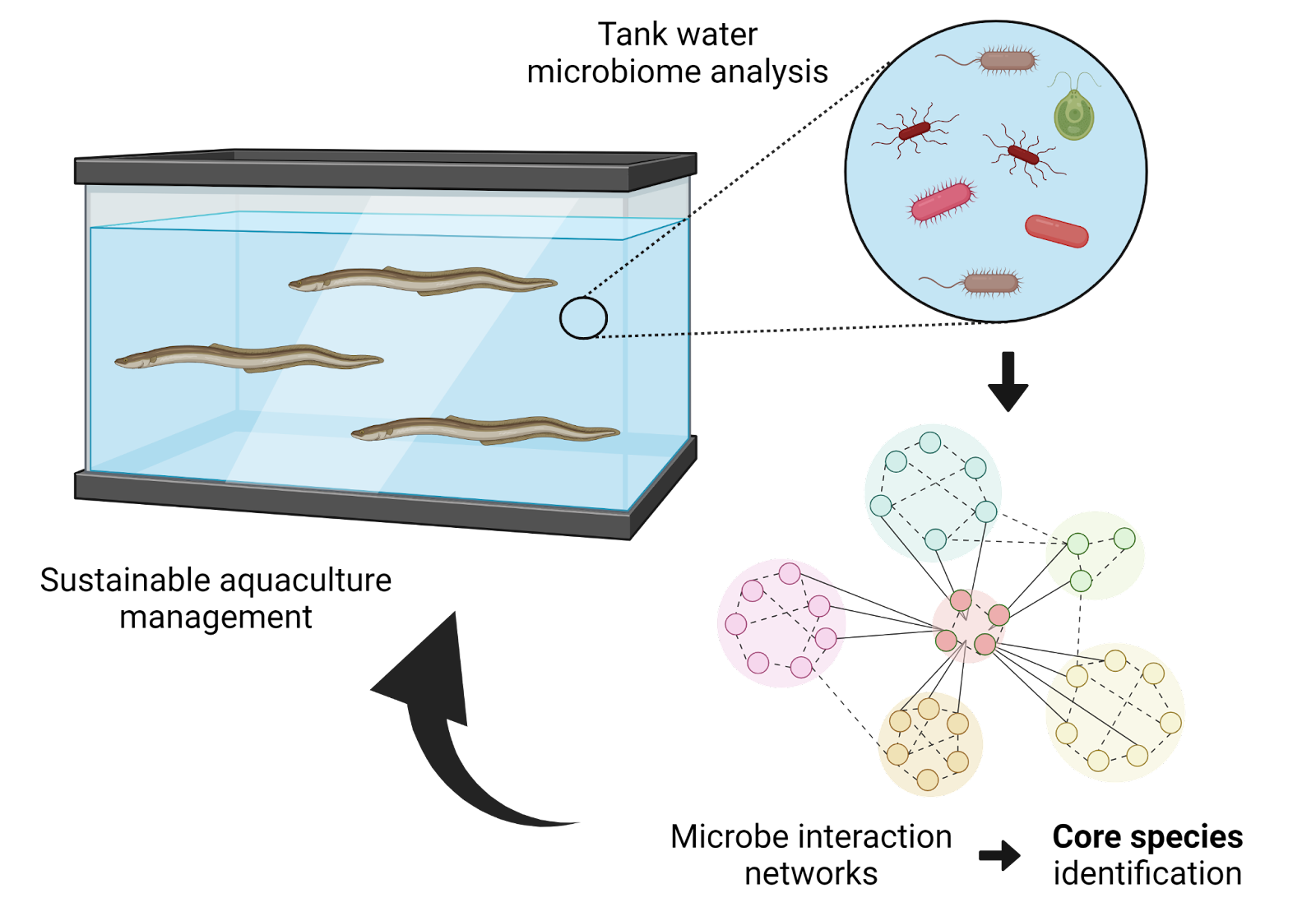Never miss an update from Kyoto University
Create your free account to connect with Kyoto University and thousands of other innovative organizations and professionals worldwide
Seafood is a major source of nutrition for more than 1 billion people. Aquaculture has become an essential production method of seafood but is facing several challenges. Aquaculture contamination is a major limiting factor that impedes growth, reduces stocks, and requires additional costs for treatment and control of pathogens. Contamination control is particularly important in closed aquaculture systems on land. Conventional aquaculture management relies on drugs such as antibiotics and pesticides, and chemical sensors for nutrient monitoring. However, more sustainable options are actively being sought. Professor Toju and his team at Kyoto University developed a method of monitoring aquaculture microflora that provides useful information for optimizing seafood growth and preventing outbreaks of harmful bacteria. The technology has been tested in a recirculating aquaculture system of the Japanese eel (Anguilla japonica) (Yajima et al. 2023).
The researchers analyzed the composition of the microbial population in the water of five eel culture tanks and its changes over 128 days. To do so, they performed DNA metabarcoding of bacterial and archaeal communities, reconstructed the population dynamics (i.e., increase/decrease) of microbial amplicon sequencing variants (ASVs) constituting the aquaculture microbiomes, and screened bacteria or archaea whose abundance was tightly linked with the health condition of eels.
The researchers discovered that each tank underwent dramatic shifts in microbiome compositions over time and that the abundance of certain microbes was associated with eels’ physiology. The researchers showed a particularly strong positive association between some microbes and eels’ activity, e.g. vitamin-B12-producing bacteriaCetobacterium somerae, consistent across the five replicate aquaculture tanks.
The researchers then performed a follow-up network analysis of microbe-to-microbe and metabolic interactions to identify “core microbiomes” potentially determining eel health/performance. The identification of microorganisms capable of positively affecting the health of eel canbe used to develop techniques for healthy aquaculture management (Fig.1).

Figure 1. Schematic summarizing the technology.Eel aquaculture was used as a proof of concept for tank water microbiome analysis, microbe interaction network reconstruction, and core species identification.
In addition to the background environmental microbiome, the gut microbiome of the fish might play a major role in and reflect the health status of the aquacuture. Therefore, the researchers plan to performsimultaneous monitoring of the intestine and background environmental microbiomes to advance technologies for sustainable food production through stable aquaculture systems.
Sunlit Seedlingsis a spin–off from Kyoto University that develops sustainable aquaculture, agriculture, and ecosystem restoration technologies. We are looking for business partners.
Technology Readiness Level
3
Potential Applications
Sustainable aquaculture
Biodiversity analysis
Information services: analysis of microbiome composition
Advantages
Sustainable aquaculture incl. improved growth
Information-based aquaculture monitoring
Possible Collaboration Mode(s)
R&D collaboration
Licensing
Other
Patents No
Patent pending
Publication(s)
Yajima D, Fujita H, Hayashi I, Shima G, Suzuki K, Toju H. Core species and interactions prominent in fish-associated microbiome dynamics.Microbiome 2023;11: 53.
Kyoto University was founded in 1897, the second university to be established in Japan. Kyoto University is among 10 National Designated Universities in Japan. It boasts 18 graduate schools, 10 faculties, 12 research institutes, and 26 centers and other establishments. Research conducted at Kyoto University spans the full spectrum of fields from social to natural science.
The outstanding research conducted at Kyoto University gives birth to useful technologies that could greatly benefit society. IAC (Office of Institutional Advancement and Communications) was established at Kyoto University to bridge the gap between researchers and industry. We facilitate joint research, technology transfer, creation of university startups, and provide entrepreneurial education. We are building a strong network of global industry partners to make sure basic research reaches the market.
Create your free account to connect with Kyoto University and thousands of other innovative organizations and professionals worldwide
Send a request for information
to Kyoto University
Technology Offers on Agri-Food are directly posted
and managed by its members as well as evaluation of requests for information. Agri-Food is the trusted open innovation and science network aimed at directly connect industry needs with professionals online.
Need help requesting additional information or have questions regarding this Technology Offer?
Contact Agri-Food support